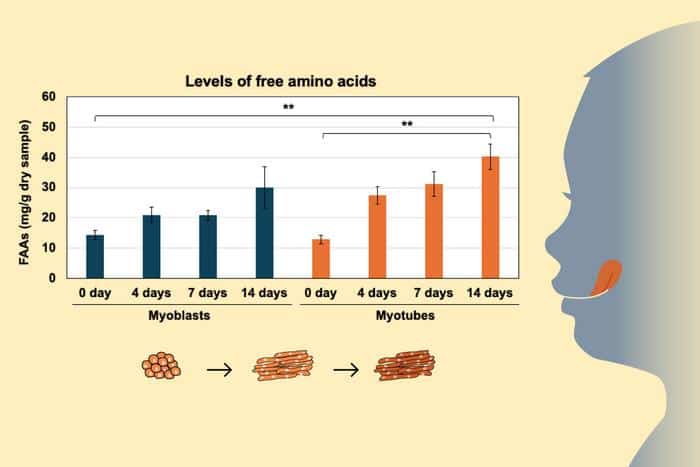Researchers at the Institute of Industrial Science, The University of Tokyo, have identified key factors that influence the flavor of cultivated beef, specifically focusing on free amino acids. Their study, recently published in Food Chemistry, explores how these compounds can be measured and controlled to enhance the taste of lab-grown meat.
As global demand for meat continues to rise, the environmental and ethical concerns surrounding traditional meat production have intensified interest in cultivated meat. While the technology has advanced significantly, one challenge remains: replicating the taste of conventional beef.
The role of amino acids in meat flavor
Amino acids, which contribute to the flavor profile of traditional meat, play a central role in this research. Free amino acids, in particular, are critical in shaping meat’s taste—glutamic acid, for instance, imparts umami, while alanine adds sweetness. Lead researcher Mai Furuhashi noted that while the impact of free amino acids on traditional meat flavor has been well documented, less attention has been paid to their role in cultivated meat.
To study this, the team grew muscle cells from bovine tissue in a nutrient bath, allowing them to differentiate and form structures resembling those found in conventional meat. Some samples were aged, while others were not, and the levels of free amino acids were measured using liquid chromatography.

Amino acid levels double
The results revealed that the free amino acid content in cultivated meat increased significantly during aging, with some amino acids present at higher levels than in conventional beef. In particular, glutamic acid was found to be the most abundant amino acid, followed by aspartic acid. This combination suggests a stronger umami flavor in cultivated beef compared to traditional meat, which tends to have a sweeter taste due to higher levels of alanine.
Senior author Shoji Takeuchi explained that free amino acid levels were notably higher in cultivated muscle cells: “The surprise was that the levels of free amino acids in cultured muscle cells were actually double those in conventional beef.” Additionally, the researchers discovered that the concentration of free amino acids in the culture medium directly influenced the amino acid levels in the cells, allowing for greater control over the flavor profile.
“The levels of free amino acids in cultured muscle cells were actually double those in conventional beef”
“This discovery is promising because it provides a means to adjust the flavor of cultured meat by manipulating the amino acid levels in the medium,” Takeuchi said. He added that while other flavor components need further exploration, this research represents a significant step toward improving the taste of lab-grown meat.
The study suggests that by refining the aging process and adjusting amino acid levels, it may be possible to make cultivated meat a more appealing alternative to traditional beef, helping to meet the growing global demand for protein while addressing sustainability concerns.







